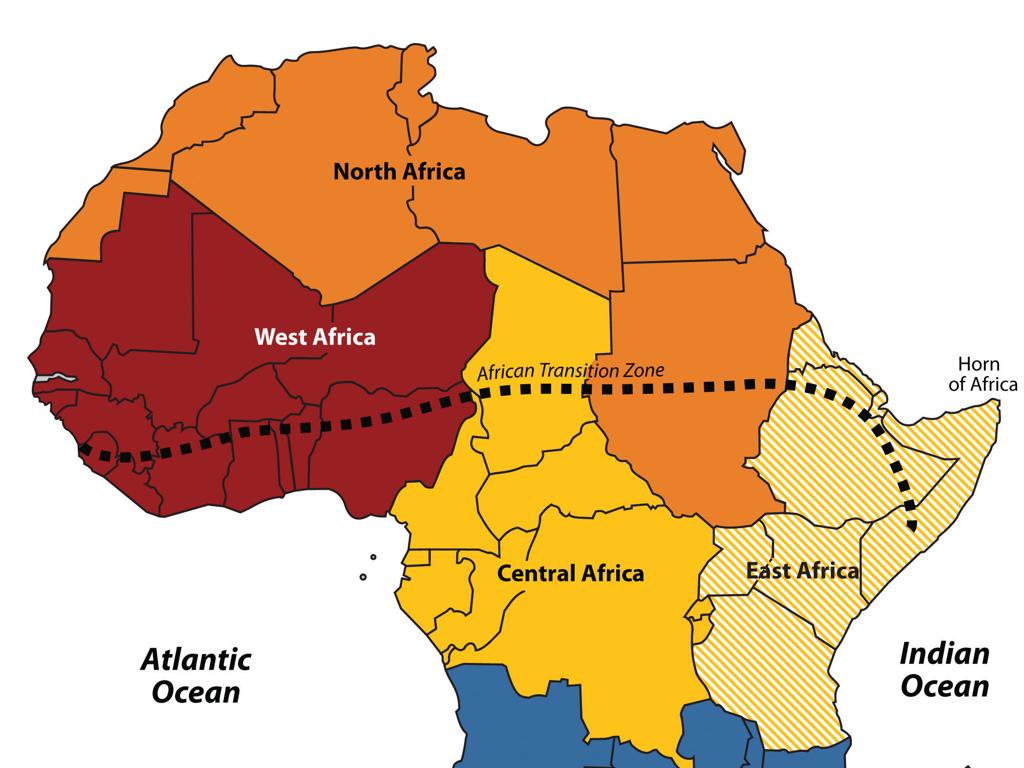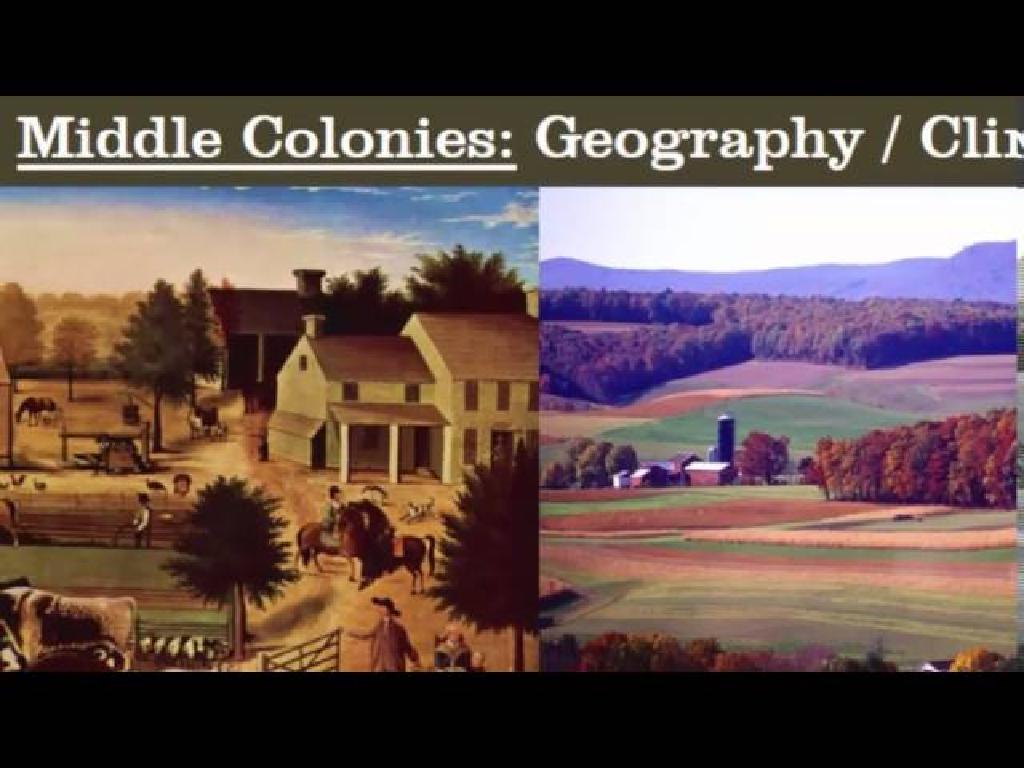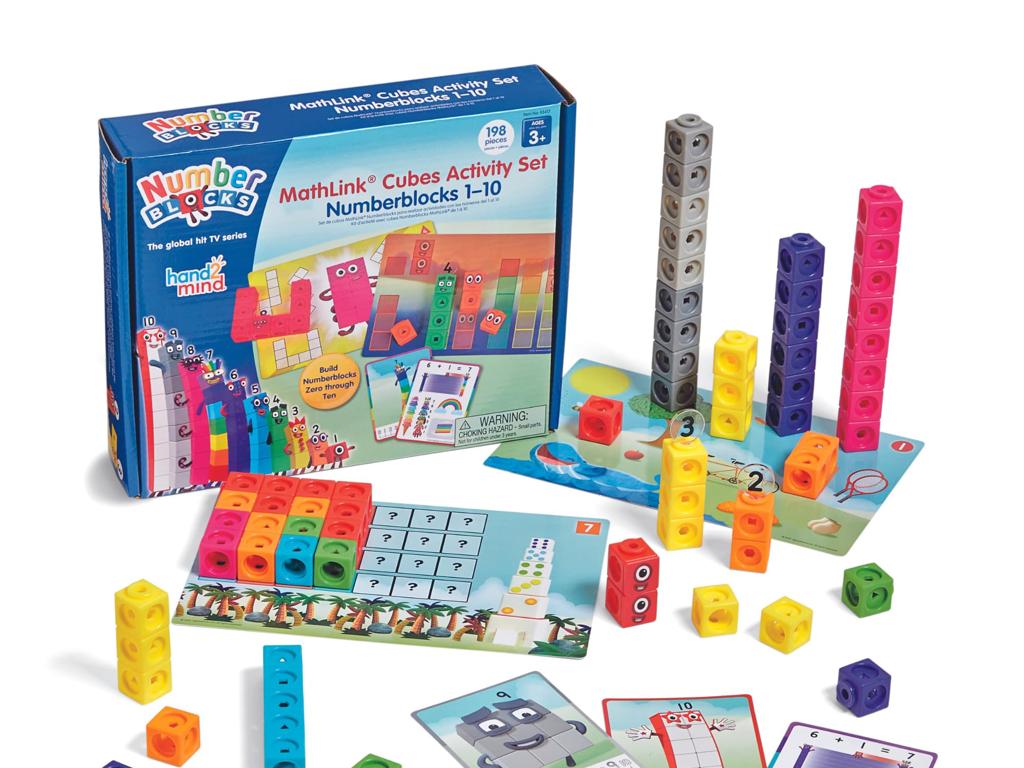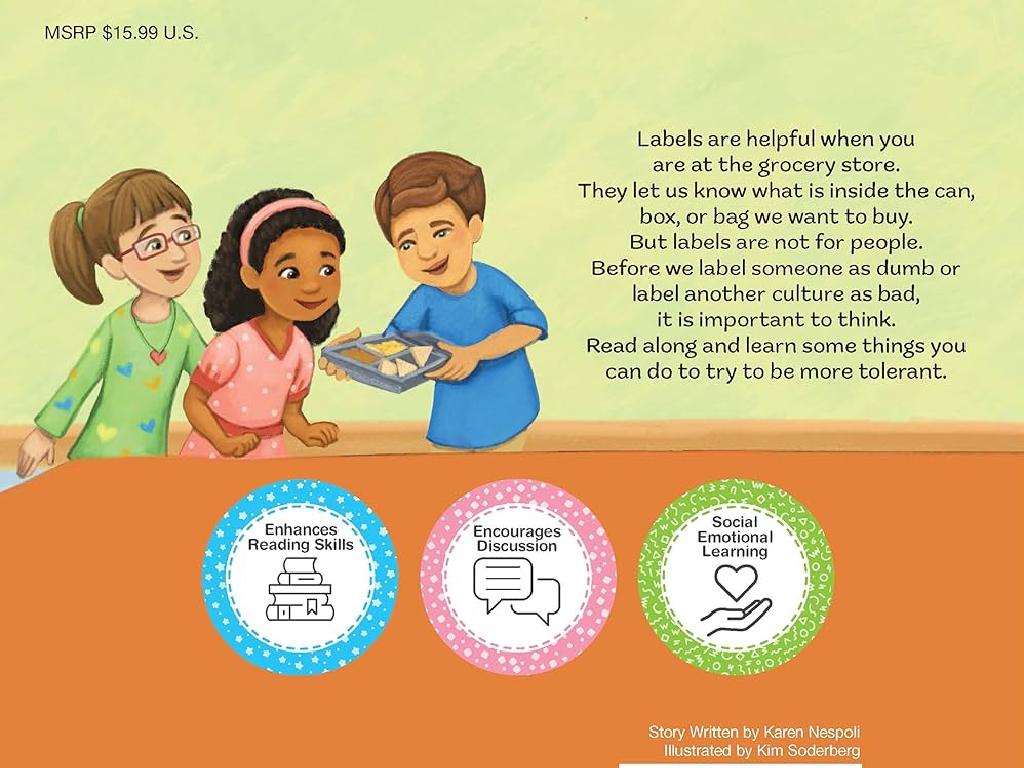Writing Numbers In Words - Convert Words To Digits
Subject: Math
Grade: First grade
Topic: Counting To 120
Please LOG IN to download the presentation. Access is available to registered users only.
View More Content
Welcome to Numbers!
– Numbers in words and digits
– ‘Sixteen’ means 16, and ‘Thirty-two’ means 32
– Counting from 1 to 120
– Let’s count together: 1, 2, 3, … up to 120
– Writing numbers as words
– The number 44 is written as ‘Forty-four’
– Converting words to digits
– The word ‘Twenty’ is the number 20
|
This slide introduces first graders to the concept of numbers in both word form and digit form. Start by explaining that numbers can be written in two ways: as words and as digits. Use simple examples to show how numbers are written and pronounced. Engage the class in counting from 1 to 120 to help them get familiar with the sequence of numbers. Practice writing numbers as words and converting words back to digits, reinforcing the connection between the two representations. Use visual aids like number charts if possible, and encourage students to participate by asking them to convert numbers they encounter in their daily lives.
Numbers Are Everywhere!
– Spot numbers in the classroom
– Daily uses of numbers
– Numbers help us count, measure, and keep track of time.
– Writing numbers with words
– ‘Twenty’ is how we write 20.
– Converting words to digits
– The word ‘fifteen’ means the number 15.
|
This slide is designed to engage first-grade students by helping them recognize the presence and importance of numbers in their everyday environment. Start by asking students to look around the classroom for numbers, such as on the clock, calendar, or number line. Discuss how numbers assist us in daily tasks like counting items, measuring lengths, or knowing when it’s lunchtime. Introduce the concept of writing numbers as words and show examples on the board. Practice converting numbers from words to digits with the whole class, using familiar numbers to reinforce learning. Prepare interactive activities where students can write numbers in words and convert words to digits, using manipulatives or visual aids for support.
Writing Numbers 1 to 10 in Words
– Number 1 as a word
– One is spelled O-N-E
– Number 2 as a word
– Two is spelled T-W-O
– Practice writing 1 to 10
– Recognize words and digits
– Match numbers with the right words
|
This slide is aimed at helping first-grade students understand how to write numbers in word form. Start by showing them the word ‘one’ and the digit ‘1’, then do the same with ‘two’ and the digit ‘2’. Encourage the students to spell out the words together as a class. Afterward, guide them through writing numbers 1 to 10 in words, ensuring they understand the spelling of each number. Reinforce the connection between the written word and the corresponding digit. As an activity, you can have students match number cards with word cards, or play a game where they have to find objects in the classroom that correspond to the number words they’ve learned.
Writing Numbers 11 to 20 in Words
– Eleven becomes 11
– E-L-E-V-E-N spells eleven
– Twelve becomes 12
– T-W-E-L-V-E spells twelve
– Practice writing 11 to 20
– Let’s write these numbers together!
|
This slide is aimed at helping first graders learn how to write numbers 11 through 20 in word form. Start by showing how the word ‘eleven’ is spelled out and then demonstrate how it is represented by the digits 11. Do the same for ‘twelve’ and the number 12. Encourage the students to practice writing the rest of the numbers from 11 to 20 in both word and digit form. This exercise will help them understand the relationship between the spoken word and its numerical representation, which is a fundamental skill in math literacy. Make sure to go slowly, allowing the students to follow along and write with you, and provide praise and support as they practice.
Understanding Tens and Ones
– Numbers have Tens and Ones
– Example: Twenty is 2 Tens
– Twenty = 2 Tens + 0 Ones
– Building numbers with blocks
– Use blocks to represent Tens and Ones
– Practice with different numbers
– Try making 30, 40, 50 using blocks
|
This slide introduces the concept of place value, specifically focusing on the tens and ones places. Start by explaining that all numbers are made up of tens and ones. Use visual aids like blocks or drawings to show how twenty is composed of 2 tens and 0 ones. Engage the students in a hands-on activity where they use blocks to build numbers, reinforcing the concept of tens and ones. Encourage them to practice with different numbers, starting with those that are multiples of ten, to solidify their understanding. This activity will help students visualize and comprehend the foundational concept of place value in a fun and interactive way.
Writing Numbers 21 to 120
– Numbers after 20 have a pattern
– After 20, numbers start with ‘Twenty-‘, then ‘Thirty-‘, and so on.
– Example: Thirty-three is 33
– ‘Thirty-three’ means 3 Tens (30) plus 3 Ones (3).
– Writing numbers up to 120
– Practice writing numbers like ‘Forty-four’ as 44.
|
This slide introduces students to the concept of writing numbers from 21 to 120 in words. Emphasize the pattern that emerges after 20, where each ten’s place is named (‘Thirty-‘, ‘Forty-‘, etc.), followed by the ones place. Use ‘Thirty-three’ as an example to show that it consists of 3 Tens and 3 Ones, which translates to 33. Encourage students to practice writing numbers in words up to 120, reinforcing their understanding of the base-ten number system. Provide additional examples and guide them through the process of converting words to digits. This will help build their number sense and prepare them for more complex math concepts.
Matching Game: Numbers in Words
– Match digits with words
– Find and write pairs on board
– Collaborate with classmates
– Encourage teamwork and sharing knowledge
– Have fun learning numbers!
|
This interactive matching game is designed to help first graders recognize numbers in both digit and word form. Students will work together to match printed cards with digits to cards with the corresponding number words. Once a match is found, they will write the pair on the board. This activity encourages collaboration, as students can help each other and discuss strategies for matching. It’s a fun and engaging way to reinforce their understanding of numbers up to 120. For the teacher: Prepare sets of cards with numbers and words before the class. Monitor the activity to ensure all students are participating and offer guidance when needed. Possible variations of the activity could include timed matches, relay races, or memory games to cater to different learning styles.
Let’s Practice Writing Numbers!
– Listen and write the number in words
– Say a number and I’ll write the digits
– Practice with different numbers
– Try numbers up to 120 to challenge yourself
– Remember, practice makes perfect!
|
This slide is for an interactive class activity focused on converting numbers to words and vice versa. Start by saying numbers out loud and having the students write them down in word form. Then, reverse the roles and have the students say numbers while you write them down in digit form. Encourage the students to practice with a variety of numbers, especially those up to 120, as this will help solidify their understanding of the number system and their ability to express numbers in written form. The repetition of this exercise will help students become more comfortable with the concept. Be prepared with a list of numbers to use for the activity and consider pairing students to practice together after the group activity.
Class Activity: Number Bingo
– Let’s play Number Bingo!
– Listen for numbers said in words
– Find the matching digit on your card
– Get five in a row to win!
– When you have five digits in a row vertically, horizontally, or diagonally, yell ‘Bingo!’
|
This interactive activity is designed to help first graders practice converting numbers in words to digits. Prepare bingo cards in advance, with a 5×5 grid of random numbers up to 120. During the game, call out numbers in word form (e.g., ‘twenty-three’) and have students locate the corresponding digit on their bingo cards. This will reinforce their understanding of number words and their ability to match them to digits. Encourage students to pay close attention and check their cards carefully. Celebrate the winners and consider offering small prizes to keep the game exciting. Provide additional support to students who may struggle and ensure everyone understands the rules before starting.
Great Work on Numbers!
– Proud of your learning today
– Practice numbers with family
– Try writing numbers in words and digits together
– Keep practicing at home
– Use everyday objects to count and write
– Excited to count higher next time!
|
Congratulations to the students for their hard work in learning to write numbers in words and convert words to digits. Encourage them to continue practicing at home with their family members, using everyday objects to reinforce their counting skills. Remind them that practice is key to becoming comfortable with numbers. In the next lesson, we will build on what we’ve learned and count even higher, fostering a sense of anticipation and excitement for the next challenge. Provide parents with simple activities they can do at home to support their child’s learning.






